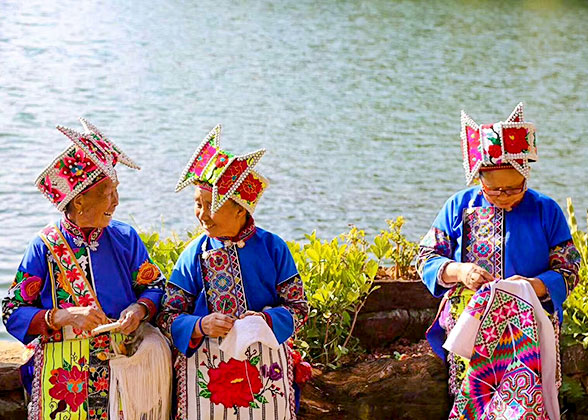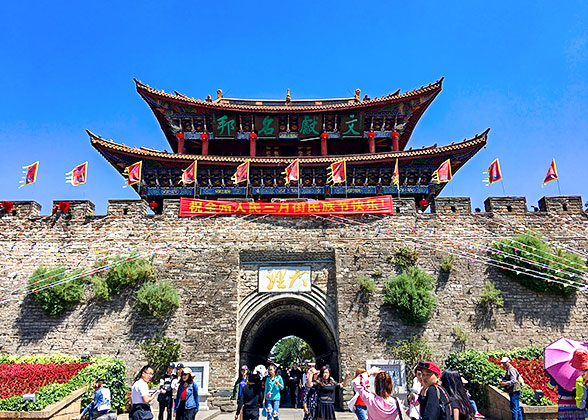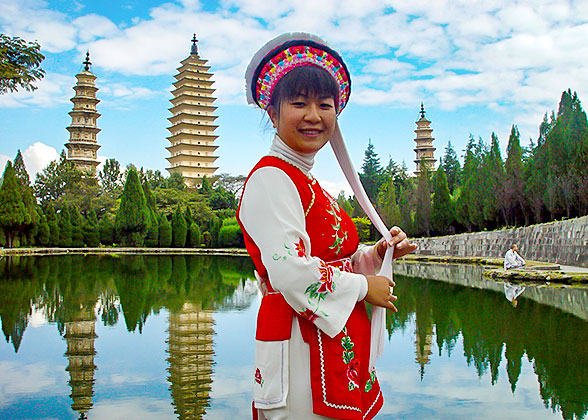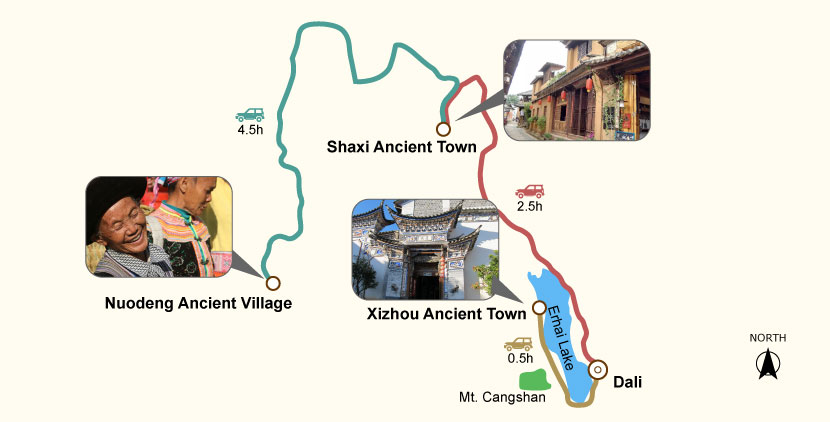Dali, a city bearing poetry and romance, is like a bright pearl inlaid between its iconic Cangshan Mountain and Erhai Lake. With unique natural beauty, profound history and culture, and leisurely pace of life, it attracts countless domestic and foreign visitors to explore its charm. To delight yourself at all the highlights of the city, let your eyes focus on our 3-day private tour, which begins from the 1,200-plus-year-old Dali Ancient City.
Loafing along the weather-beaten city walls or on the flagstone-paved streets lined with some historical sites, you may still feel the glory of the past Nanzhao Kingdom. Then marvel at the loftiness of Cangshan Mountain and the tender beauty of Erhai Sea set off each other, forming a magnificent and poetic landscape painting. How could you miss taking a snapshot of the landmark Three Pagodas, a millennium legend that combines Buddhist culture, architectural beauty, and historical values? Learning to make specialty snacks in Xizhou Ancient Town and Chinese Tie-dyeing in Zhoucheng Village, as well as appreciating the exquisite architectural art in Yan’s Compound, will give you a glimpse of local Bai ethnic culture. If you are very limited in time, our guided 1-day trip is a perfect solution.
Have 5 days off? We will extend your itinerary to the Ancient Tea Horse Road for a dialogue with history. In Shaxi Ancient Town, the only remaining ancient market on the Road, chill yourself by exploring some literary and artistic studios or watching sunset on Yunjin Bridge. Then arrive at Nuodeng Ancient Town, a very primitive Bai village hidden deep in the mountains, and get an eye-opening view of myriad exquisite structures of Ming and Qing Dynasties, such as the Jade Emperor Pavilion Taoist complex. Action speaks louder than words! It’s time to contact us for your custom-made Dali tours.
... Read more
Have 5 days off? We will extend your itinerary to the Ancient Tea Horse Road for a dialogue with history. In Shaxi Ancient Town, the only remaining ancient market on the Road, chill yourself by exploring some literary and artistic studios or watching sunset on Yunjin Bridge. Then arrive at Nuodeng Ancient Town, a very primitive Bai village hidden deep in the mountains, and get an eye-opening view of myriad exquisite structures of Ming and Qing Dynasties, such as the Jade Emperor Pavilion Taoist complex. Action speaks louder than words! It’s time to contact us for your custom-made Dali tours.
... Read more




